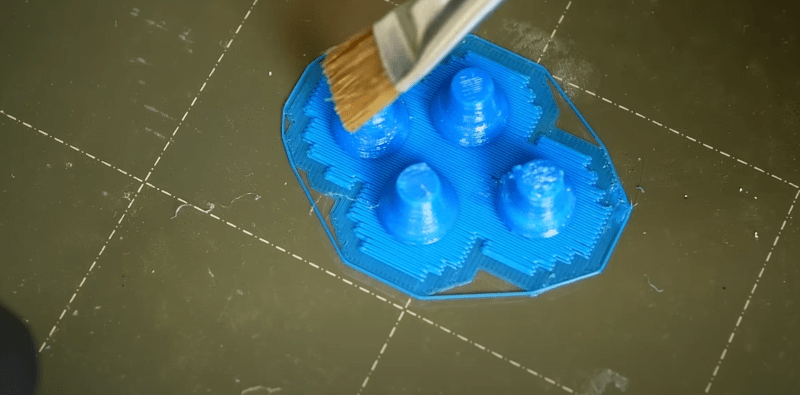
If you have problems getting a 3D print to stick to the bed, you might consider using glue to — hopefully temporarily — attach the print to the bed. In addition, some plastics glue together well if you use a solvent. [Stefan] asks the question: What if you use solvent to glue each layer of a 3D print to the previous layer? The answer is in the video below.
If you know [Stefan], he is always meticulous, so the first test was with normal ABS parts. Then he used a solvent to glue two broken parts together to show how a single layer does with bonding. Then he moved toward trying the solvent for each layer.
Obviously, if you already knew this was a good idea, you’d want to rig up something to apply the solvent automatically. Since this was experimental, though, [Stefan] just had the gcode move the print head aside for each layer so he could manually apply the solvent. This was trickier than you might think because acetone boils off quickly from hot plastic. In addition, if it doesn’t boil off, it makes the existing layer swell, so the appearance of the parts wasn’t great.
Unfortunately, the strength of the printed parts was disappointing. ABS parts were not any better — and in some ways worse — than the reference parts. He then tried PVB which dissolves in alcohol. While it was easier than acetone, the results were not that great.
[Stefan] hopes there might be some process to make this work, but the simple methods he tried aren’t useful. It would be great if this simple idea would have led to stronger 3D printed parts. But as [Stefan] points out, negative results are important, too. Otherwise, we will all spend time trying things that won’t work repeatedly. Based on these results, you can try something different and maybe you’ll have better luck.
We really like the detailed and rigorous work [Stefan] does. From homebrewing high flow extrusion gear to putting bends in gcode, [Stefan] always has something interesting and well thought out.
No comments:
Post a Comment